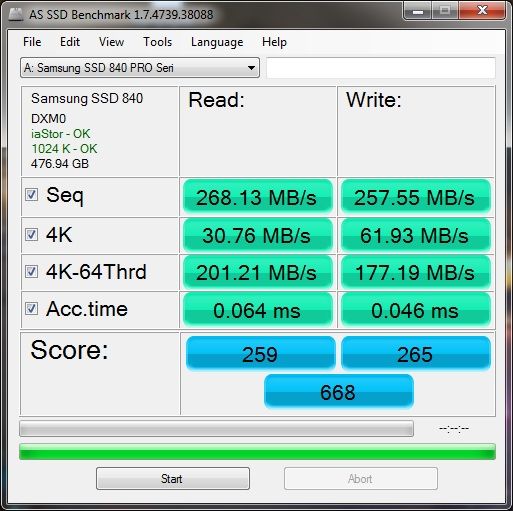I just installed a new SSD. A 512GB Samsung 840 Pro, I plan on making it my boot drive with a fresh install of Windows 7 but just thought I would install it first and make sure everything was functioning properly.
I installed Samsung Magician and it sees the drive, but under the System information it says that AHCI mode is disabled and that it is also unable to detect the SATA interface details.
I have AHCI enabled in the bios, both on the 3 and 6GB/s ports, and I am also certain I have the drive plugged into the SATA 3. It's quite easy to tell as there are six grey SATA 2 ports and 2 red SATA 3 ports.
Could this be an issue with my mobo not being a native SATA 3 board? I think it uses a Marvel controller.
Ideas?
I installed Samsung Magician and it sees the drive, but under the System information it says that AHCI mode is disabled and that it is also unable to detect the SATA interface details.
I have AHCI enabled in the bios, both on the 3 and 6GB/s ports, and I am also certain I have the drive plugged into the SATA 3. It's quite easy to tell as there are six grey SATA 2 ports and 2 red SATA 3 ports.
Could this be an issue with my mobo not being a native SATA 3 board? I think it uses a Marvel controller.
Ideas?
![[H]ard|Forum](/styles/hardforum/xenforo/logo_dark.png)

